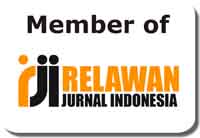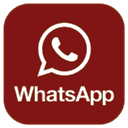A Correlational Study of Digital Literacy Comprehension Toward Students' Writing Originality
Abstract
Keywords
Full Text:
PDFReferences
Abasi, R. A., Akbari, R., & Graves, B. (2006). Discourse Appropriation, Construction of Identity, and the Complex Issue of Plagiarism: ESL Students Writing in Graduate School. Journal of Second Language Writing, 102-117.
ALA, A. L. (2012). Digital Literacy, Libraries, and Public Policy: Report of the American Library Association Digital Literacy Task Force. Chicago: ALA. Retrieved April 9, 2018, from ALA Connect: http://connect.ala.org/node/181197
Bawden, D. (2001). Information and Digital Literacies: A Review of Concepts. Journal of Documentation, 218-259.
Borg, E. (2000). Citation Practices in Academic Writing. UK: Center for Applied Language Studies.
Buckingham, D. (2015). Defining Digital Literacy. Nordic Journal of Digital Literacy, 21-34.
Chase, Z., & D, L. (2011). Embracing the Squishiness of Digital Literacy. Journal of Adolescent & Adult Literacy, 535-537.
Ercegovac, Z. (2014). Plagiarism of Print and Electronic Resources. College & Research Libraries, 2.
Fauziati, E. (20017). Teaching English as a Foreign Language (TEFL II): Principle and Practice. Surakarta: Era Pustaka.
Gall, M. D. (2003). Educational Research: An Introduction. New York: Pearson Education, Inc.
Gee, J. P., & Hayes, R. E. (2011). Language Learning in the Digital Age. New York: Routledge.
Haggarty, S. (2015). Originality in Creative Writing. Retrieved April 9, 2018, from Stephanie H: stephaniehaggarty.com
Hobbs, R. (2010). Digital and Media Literacy: A Plan of Action. Washington DC: Aspen Institute.
Kotze, T. (2007). Guidelines on Writing a First Quantitative Academic Article. Pretoria, South Africa.
Krapez, K. (2013). The (un) Originality of Scientific Papers- An Analysis of Professional Quality Standard. Management, Knowledge, and Learning International Conference. Zadar: Make Learn.
Kwon, S., & Hyun, S. (2014). A Study of the Factors Influencing the Digital Literacy Capabilities of Middle-aged People in Online Learning. Korean Journal of the Learning Sciences, 120-140.
Larusson, B. W. (2010). Detecting The Point of Originality in Student Writing. Technical Report, 1-5.
Mairing, J. P. (2017). Statistika Pendidikan. Jogjakarta: Andi.
Meyers, E. M., Erickson, I., & Small, R. V. (2013). Digital Literacy and Informal Learning Environments: An Introduction. Learning, Media, and Technology, 355-367.
Murray, F. F. (2016). Digital Literacies for Language Learning and Teaching: Developing a National Framework. 2nd International Conference on Higher Education Advances, Head' 16. Valencia: Universitat Politecnica de Valencia.
Noh, Y. (2017). A Study on the Effect of Digital Literacy on Information Use Behavior. JoLis (Journal of Librarianship and Information Science, 26-56.
Phuapan, P., Viriyavejakul, C., & Pimdee, P. (2016). An Analysis of Digital Literacy Skills among Thai University Seniors. I-jet, 24-31.
Prensky, M. (2001). Digital Natives, Digital Immigrant. On the Horizon, 1.
Prior, P. (2001). Voices in Text, Mind, and Society: Sociohistoric Accounts of Discourse Acquisition and Use. Journal of Second Language Writing, 55-81.
Pugh, E. P. (1994). How to get a Ph.D. USA: Open University Press.
Salmons, J. (2018). Honesty and Originality in Academic Writing. New York: SAGE Publishing.
Small, R. V., Arnon, M., Stripling, K., & Berger, P. (2012). Teaching for Inquiry: Engaging the Learner Within. New York: Neal-Schuman Publisher.
Sugiyono. (2013). Metodologi Penelitian Kuantitatif, Kualitatif, dan R & D. Bandung: Alfabeta.
Suryabrata, S. (1999). Metode Penelitian. Jakarta: Raja Grafindo Persada.
Visser, M. (2013). Digital Literacy and Public Policy through the Library Lens. Maine Policy Review, 104-113.
Zergollern-Milletic, L., & Horvath, J. (2009). Coherence and Originality in University Students' Writing. Empirical Studies in English Applied Linguistics, 135-151.
DOI: http://dx.doi.org/10.31332/lkw.v5i1.1151
Copyright (c) 2019 Nur Muthmainnah Yusuf

This work is licensed under a Creative Commons Attribution-ShareAlike 4.0 International License.
Publisher:
UPT Pengembangan Bahasa, IAIN Kendari
Jln. Sultan Qaimuddin No. 17 Baruga, Kota Kendari, Sulawesi Tenggara
Website: upb.iainkendari.ac.id
Email: [email protected]


















